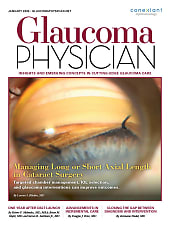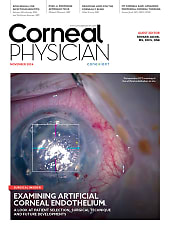In retina practice management, making wise choices can be challenging when the “sunk cost fallacy” muddles your decision-making. Getting a grip on this mindset is vital to running things smoothly, spending resources well, and delivering quality retina care to your patients—in other words, maintaining the efficiency of your medical practice.
Understanding Sunk Cost Fallacy
So, what is “sunk cost fallacy?” It’s when a practice keeps throwing time, money, or effort into something that they recognize is not working well, but they feel compelled to continue because they’ve already invested so much. This a common problem, and it’s compounded by continual fee reductions by the Centers for Medicare and Medicaid Services (CMS), Medicare Advantage (MA), and commercial payers. Some examples include continuing to use outdated diagnostic testing equipment the vendor cannot support or making impulsive decisions without considering all options.
Another example is refusing to review processes for inefficiencies at your retina clinic because “we’ve always done it this way,” and there are concerns that the physician(s) or staff don’t want to change their processes. Frequently, procedures evolved as the clinic moved from paper charts to EHR without anyone taking time to review these processes and determine whether they were still necessary. Adding new procedures to the old ones makes staff busy, but not necessarily efficient. While learning to do things differently can be challenging, improving a medical practice’s efficiency can save time and money and increase profits in the long run.
The sunk cost mindset can slam the brakes on trying new or more efficient ways of doing things in the retina clinic. Sticking with equipment and processes because of the money that’s already been spent on them can directly affect the bottom line.
Picking the Right Team
The sunk cost fallacy can also influence who’s on your team. One of the biggest sunk cost fallacies is employees who cause issues not only for medical practice efficiency but with, well, just about everyone. It could be a staff member who has been at your retina clinic since day one or someone new you thought would be the answer to your problems, only to find out they cause more issues than they fix.
Resolving personnel problems can be uncomfortable, especially when they involve a long-term employee. It can be hard to avoid the trap of, “I don’t want to be mean or a bad guy” or “they are loyal”—but if these employees are causing good workers to leave, they’re not worth keeping.
It is always hard to terminate an employee, but keeping underperformers around just because you’ve spent time training them can create issues with the performance of your team. While keeping an employee may be less costly in the short term than hiring and training a new person, in the long term, keeping that employee may cost the retina clinic more than letting them go would.
Challenge yourself to step back and objectively examine the daily activities staff and physicians perform at your retina clinic. Are there redundancies, inefficiencies, or antiquated systems? Don’t be afraid to see that changes are needed. Change is constant, and retinal physicians are very aware of the innovations in drugs and surgical procedures that have come about in recent years. Taking a hard look at the situation from a different perspective can be positive.
Flip the Script for Efficiency
Shifting your mindset to think ahead and focus on what could work in the future, instead of obsessing over what you’ve already spent, is the way to move forward. Objectivity and detachment are necessary to shift perspective. The ability to see what isn’t working is valuable. While there may be an impulse to put finances first, putting patient care first helps maintain the perspective of why you became a retina physician. If patient care is exceptional, everything else can fall into place. Patients are your lifeblood – without patients, you don’t have a retina clinic.
Make choices based on what’s happening right now, not just because you’ve already put money, time, and effort into it. Use data to see if what you’re doing works. Numerous metrics are available and easy to calculate that can clearly show the efficiency of your retina practice. Some financial metrics include:
- Accounts Receivable (AR) Aging Analysis
- Charge Entry Lag
- Claim Denial or Error Rate
Some physician productivity metrics include:
- Net Collections per Full-Time Equivalent (FTE) Physician
- Number of Staff per Full-Time Equivalent (FTE) Physician
- Patient Office Visits per Full-Time Equivalent (FTE) Physician
A few practice efficiency metrics include:
- Net Collections per Full-Time Equivalent (FTE) Staff
- Net Collections per Office Visit
Retina practices should exclude medicines from these calculations, because drugs are accounted for under Cost of Goods Sold (COGS) and can skew the data. Use CPT codes, such as office visits, diagnostic testing, and procedure codes, for the calculations.
From a human resources perspective, look at staff retention, turnover, days absent, tardiness, and general productivity. If there is a problem with a staff member, address it. The longer bad behavior is ignored, the more others will believe such behavior is acceptable or grow resentful that the rules don’t apply to certain favored employees. Either way, a culture issue will undermine even the most efficient retina clinic.
Make new ideas welcome in your retina practice. You might be surprised how many incredible ideas come forward once you are open to hearing about new or more efficient processes. Not all ideas will be workable, but sometimes there are thoughts you can tweak and implement that will be better than the old way. The key is being willing to listen.
Check and Fix Processes at Your Retina Clinic Regularly
Monitor your changes in processes, whether technology, methods, plans, or people. Don’t be afraid to alter course for things that do not increase your retina practice efficiency. The goal is for things to run smoothly and achieve better results. Always. Forever and ever.
Using metrics, create a baseline for where your retina clinic is now. After implementing your change(s), measure again to see how far you have come. If something isn’t working, the numbers will give you the data. Caution: Be consistent in how you gather data. Inconsistency in data creation will provide inaccurate information.
Beat the Sunk Cost Trap
Things get better when you’re not stuck in the past. Getting past the sunk cost fallacy is good for staff, physicians, and the practice, and means better care for patients. Making changes based on objective data about what’s happening facilitates smooth operations, saves money, and keeps your retina clinic in business.
Beating the sunk cost trap means continuously improving. Your retina clinic can stay first-rate in a constantly changing world by making sensible and well-thought-out decisions, instead of staying mired in the past. You can create the retina clinic you want by putting patients first, trying out new ideas, and looking ahead. NRP









